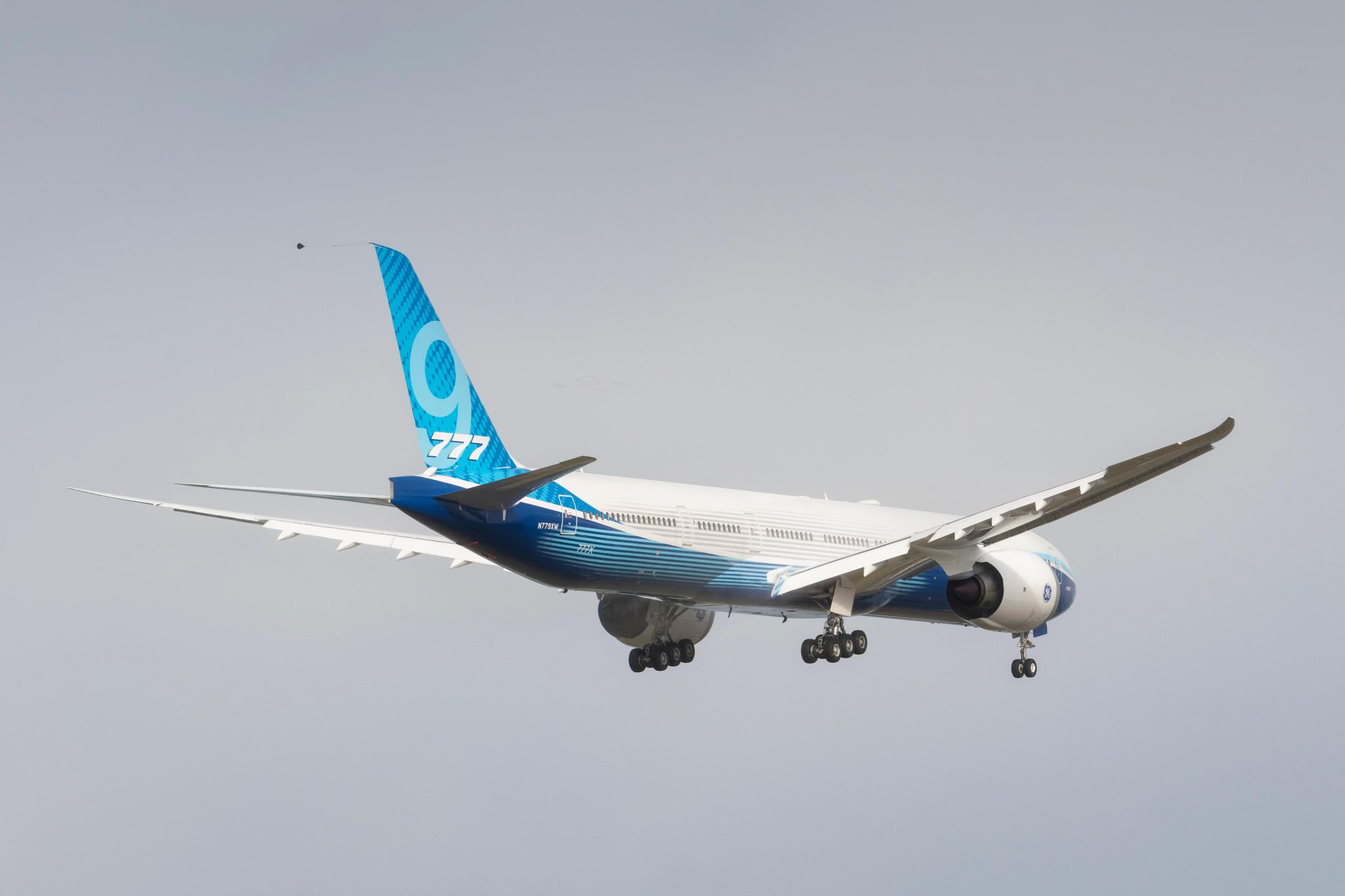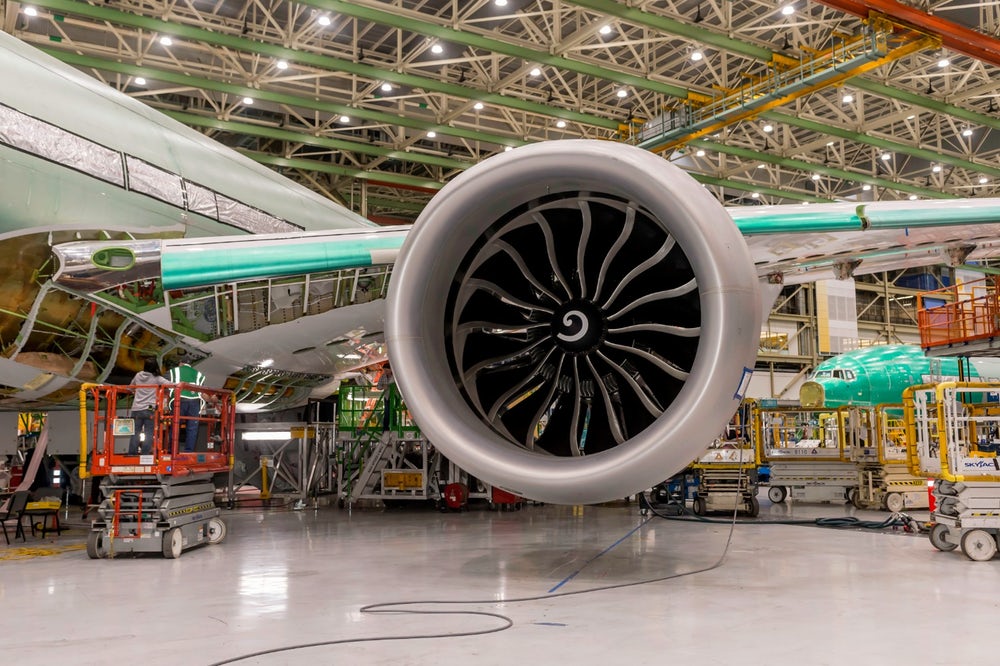GE Aviation has announced that American multinational aerospace giant Boeing has completed the first flight of its 777X jet, powered by twin GE9X engines. The engines are equipped with over 300 3D printed parts.
The airplane is the world’s largest twin-engine jetliner and passenger plane. Two previous attempts at getting the 777X airborne were made, however, the tests were postponed due to high winds. The airplane took off from Paine Field in Everett, WA, on January 25, 2020.
“On behalf of the GE team, congratulations to Boeing on the first flight of the 777X. Today’s massive milestone is a testament to the outstanding work and dedication of both companies,” commented David Joyce, president, and CEO of GE Aviation and GE corporate vice-chairman.
“We are proud to be the power under the wings of the 777X and provide this state-of the-art aircraft with GE’s advanced technology.”

3D printing on the GE9X engine
GE has been developing and testing the GE9X engine since 2013. Designed to eventually power the next-generation Boeing 777X. The engine’s first on-ground run was in 2016, and the engine’s first flight took place in 2018. The engine has been recognized by the Guinness Book of World Records as the most powerful commercial aircraft jet engine after reaching 134,300 lbs of thrust in 2019. It is also billed as the world’s largest commercial jet engine by GE, with a front fan measuring at 134 inches in diameter, fully equipped with 16 fourth-generation carbon fiber composite fan blades.
Building on the legacy of the preceding GE90 engine – the first from GE to incorporate additive manufacturing – 3D printing has played a key role in the engine’s development throughout the years. First reported in 2016, 3D printing features heavily in the engine’s design, specifically enabling engineers to manufacture parts with geometries that can’t be realized with traditional manufacturing methods.
In 2017, GE announced that it had successfully performed further testing of its 3D printed components for the GE9X engine. This second phase of testing involved ceramic matrix composite (CMC) components and additive manufactured turbine blades featuring advanced cooling technology.
Two years later, we reported that the GE9X featured a number of 3D printed parts as Boeing and GE prepared for its first test flight with the 777X. Comprising around 300 3D printed parts, these come together to make up a total of seven multi-part components. This includes the famed GE 3D printed fuel nozzle. Additional components, including temperature sensors and fuel mixers, and larger parts, like heat exchangers, separators and foot-long low-pressure turbine blades, helping to reduce the weight of the engine. Later in 2019, it was revealed that GE Aviation had added 27 Arcam electron beam melting (EBM) machines to produce titanium aluminide (TiAl) blades for the GE9X engine. According to GE, 3D printing has helped to make the GE9X engine 10% more fuel-efficient than the GE90.

777X to hit the skies in 2021
In preparation for the 777X flight, GE Aviation has conducted a total of 72 test flights of the GE9X. This amounts to over 400 hours of flying on its Boeing 747 flying testbed in Victorville, CA. Thus far, the GE9X program has completed more than 4,100 hours of ground and air testing, as well as 6,500 cycles. GE Aviation has been focused on clearing the GE9X for certification and expects the engine to be certified sometime in 2020. In support of the Boeing 777X test program, eight GE9X engines and two spares have been produced by GE Aviation.
“The flight test program of the Boeing 777X with the GE9X will validate the performance objectives and advantages of this airplane and engine combination,” stated Ted Ingling, GE9X program manager. “The GE9X is the most fuel-efficient jet engine that GE has ever produced, operating at 10 percent lower fuel consumption than competing engines.”
The 777X was launched in November 2013 with two variants: the 777-8 and the 777-9. The 777-8 provides seating for 384 passengers, whereas the 777-9 has seating for 426 passengers. Boeing’s test flight was with the 777-9 variant, which measures at 77m (252ft) long. Powered by the GE9X engines, the test flight concluded at Boeing Field, where the 777-9 safely landed. The new set of airplanes is expected to enter service in 2021.
Subscribe to the 3D Printing Industry newsletter for the latest news in additive manufacturing. You can also stay connected by following us on Twitter and liking us on Facebook.
Looking for a career in additive manufacturing? Visit 3D Printing Jobs for a selection of roles in the industry.
Featured image shows the Boeing 77X in flight. Photo via Boeing Airplanes.

